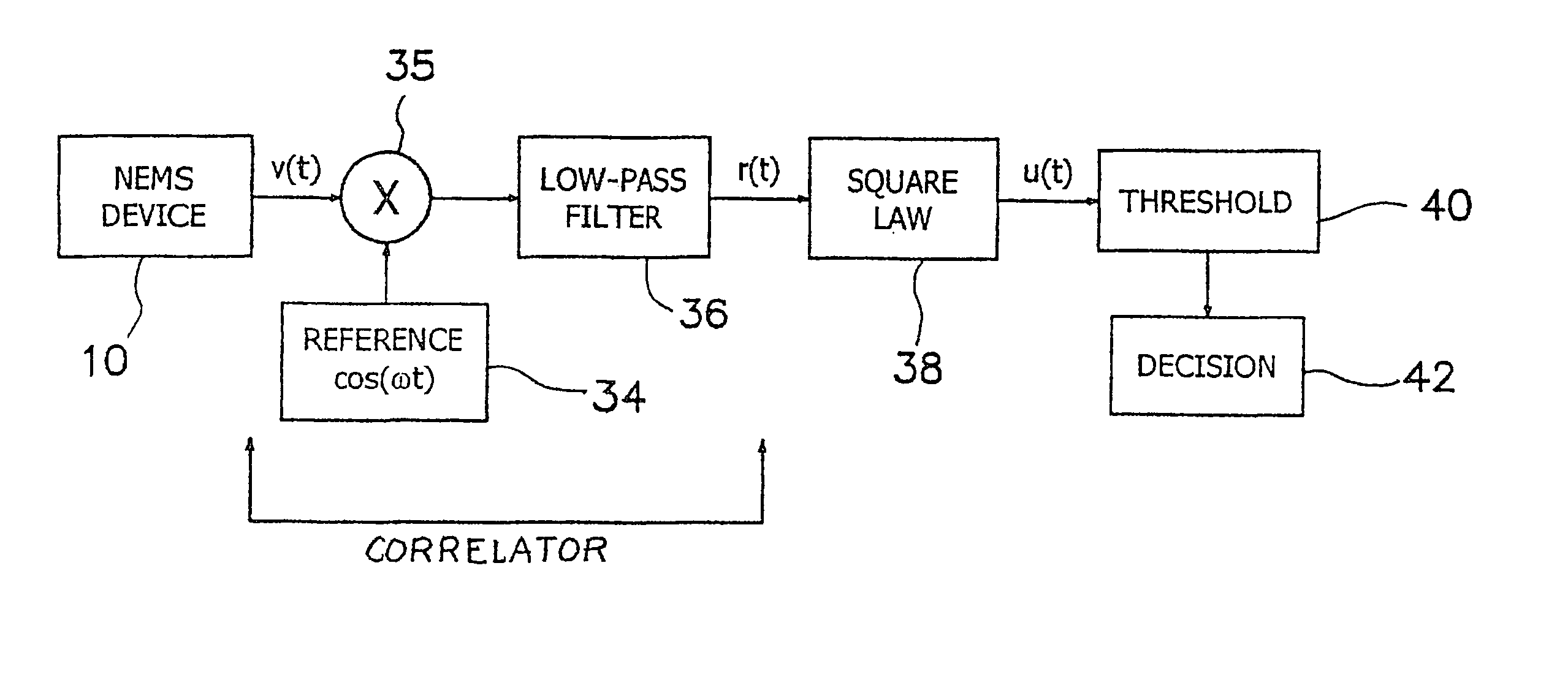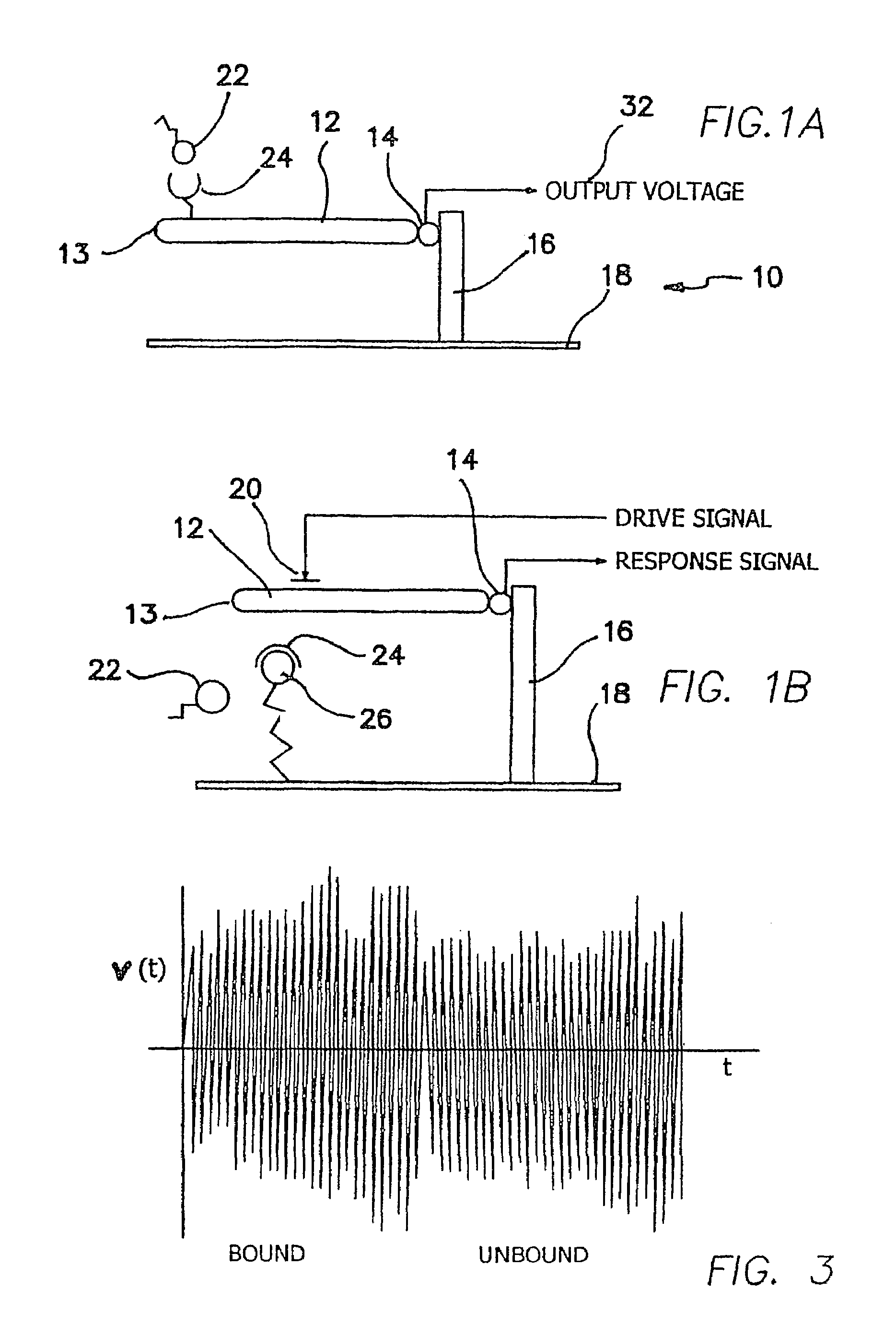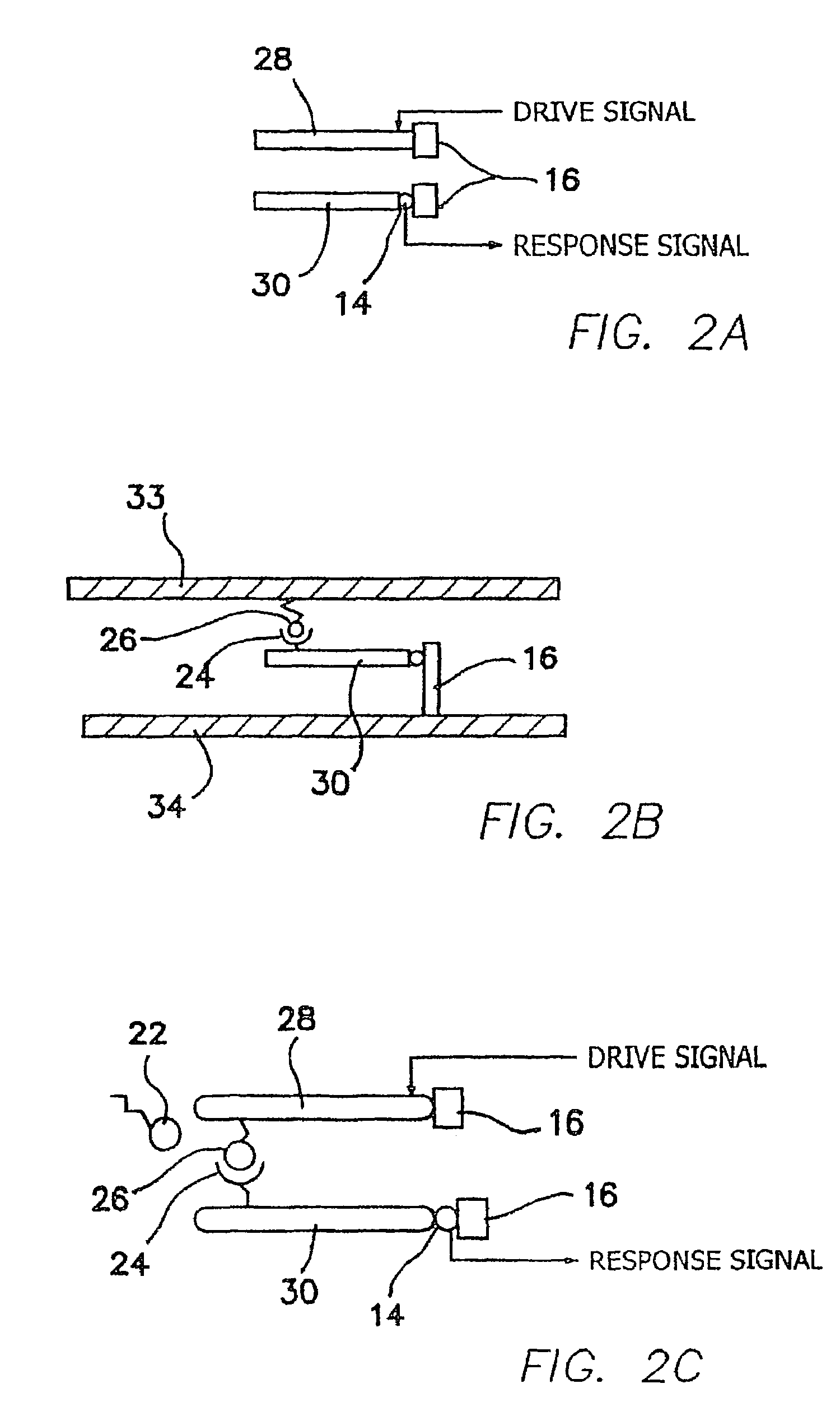Method and apparatus for providing signal analysis of a BioNEMS resonator or transducer
a bionems resonator or transducer technology, applied in the field of methods, can solve the problems of inability to detect resonance, inconvenient application, and difficulty in harvesting potential, and achieve the effect of reducing the noise of cantilever motion, and reducing the size and nature of the instrumentation needed
- Summary
- Abstract
- Description
- Claims
- Application Information
AI Technical Summary
Benefits of technology
Problems solved by technology
Method used
Image
Examples
Embodiment Construction
Physical Parameters that Govern SNR in Stochastic Signal Detection in BioNEMS Devices
[0057]The illustrated embodiments disclose several signal detection strategies for several NEMS device configurations. Four embodiments are illustrated, the second of which is a simple variation of the first, which are shown in FIGS. 1a, 1b, 2a, and 2b. FIG. 1a shows a passive one-port device 10, while FIG. 1b shows the same embodiment using in an active mode, i.e. in which an external drive signal is applied to vibrate the cantilever. A submicron or NEMS cantilever beam 12 in FIG. 1a is coupled via a NEMS output device 14 to a support 16 mounted in turn on a substrate 18. Free ligand molecules 22 are available for binding to bound receptor molecules 24 on beam 12. In FIG. 1b a gate drive 20 is coupled to beam 12 and there is also bound ligands 26 on substrate 18 combined or combinable with receptors 24 on beam 12. Bound ligands 26 are identical to free ligands 22 except for being complexed with rec...
PUM
| Property | Measurement | Unit |
|---|---|---|
| size | aaaaa | aaaaa |
| forces | aaaaa | aaaaa |
| forces | aaaaa | aaaaa |
Abstract
Description
Claims
Application Information
 Login to View More
Login to View More - R&D
- Intellectual Property
- Life Sciences
- Materials
- Tech Scout
- Unparalleled Data Quality
- Higher Quality Content
- 60% Fewer Hallucinations
Browse by: Latest US Patents, China's latest patents, Technical Efficacy Thesaurus, Application Domain, Technology Topic, Popular Technical Reports.
© 2025 PatSnap. All rights reserved.Legal|Privacy policy|Modern Slavery Act Transparency Statement|Sitemap|About US| Contact US: help@patsnap.com



